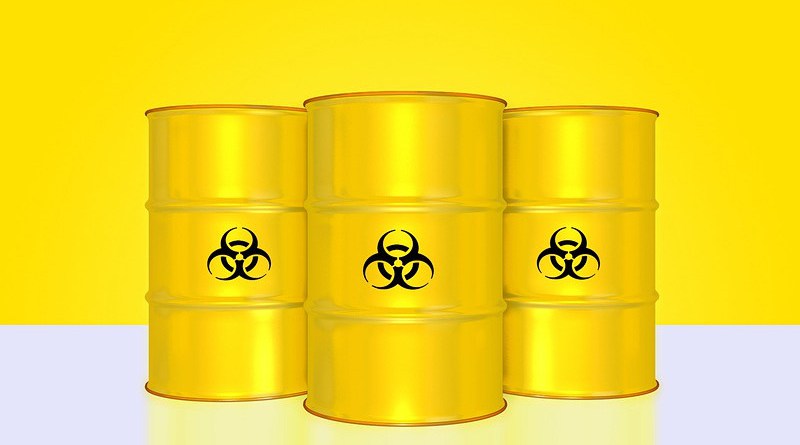Since the establishment of Indian nuclear program, India has not adopted appropriate mechanism for the radioactive waste management. Joint Convention on the Safety of Spent Fuel Management and on the Safety of Radioactive Waste Management formulate the safety standard of radioactive waste while every country making use of nuclear energy are obliged to implement those principles and regulation. However, the Atomic Energy Regulation Board in India has failed to perform its assigned duty.

Even at the time of the Indo-US nuclear deal, a diplomat from Kolkata had sent a cable to Washington: India lacks nuclear safety measures. Nuclear radiation is a constant threat to the Indian populace in many areas. The Subarnarekha River spring out from the plateau of Chota Nagpur in eastern India and joins the Bay of Bengal.
Similarly, now India illegally transports its radioactive waste to Africa for dumping. “This is clearly a means of dumping dangerous substances in East Africa. We have proof that what was declared is just part of the contents, but the radioactive material is also in the ship, and is emitting high radiation,” a person told to media on the condition of anonymity.
Kenya is a cosigner to the Indian Ocean Memorandum of Understanding (IOMOU) that enacts international commitments to thwart, seize, ban and fight illegal transferring of nuclear and elements and Weapons of Mass Destruction proliferation. It is pertinent to mention that high level radioactive radiation emanating from nuclear waste cause a number of serious diseases: Skin problems, cancer, as well as radio vascular diseases. However, the Indian government does not admit it.
However, the issue first came into light in India when a professor of Physics, Dipak Ghosh of Jadavpur University conducted an investigation and research to diagnose the reasons of diseases among the populace living alongside the Subarnarekha River. When his team gathered data and samples and analyzed it, they shocked by the result that the water was polluted by alpha radioactive particles, quite harmful for human health. It was found that these radiations were 1000 times more harmful than other radiations. Besides, it was found the levels of safety were 160 percent higher than the parameter set by World Health Organization. In an interview, Professor Gosh said, “It was potentially catastrophic.” Hence, it was concluded that millions of people living along the coast were prone to these radioactive radiation.
Moreover, the team of professor Gosh discovered that the deadly footmark was due to the nuclear mining and fuel fabrication. Though the Indian government claims there is enough precautions for the nuclear power generation, there are serious loopholes which has put the lives of millions of Indians in danger. Though nuclear power is environmentally benign and economically viable, it needs to adopt safety protocols as well.
Ironically, talking about the reports of health issues in the region, the Indi’s nuclear chief sustained that the unhygienic conditions and poverty is the main cause of the illnesses. Experts, health workers and doctors say the nuclear authority has repeatedly turned down our reports. The nuclear industry is trying to abate the evidence of diseases, locals claim. However, India’s Atomic Energy Commission denounces these reports. Despite substantial evidences, the commission asserts that the problems have been solved and no case has been proven since then.
Hence, after decades working on nuclear program, India has yet to adopt a workable solution for the high level nuclear waste and other safety measures regarding nuclear activity. The radioactive waste generated by nuclear mining and nuclear power plants is a serious challenge for India to make necessary arrangements where it has not only endangered the lives of the millions of Indians, it is also a risk for the outer world where India is illegally transfer their nuclear radioactive waste. We have recent example of seizing a ship in Kenya carrying nuclear waste from Mumbai, India. Moreover, the International Atomic Energy Agency shall also take measures to warn India of any violation of the rules and standards set by it internationally.